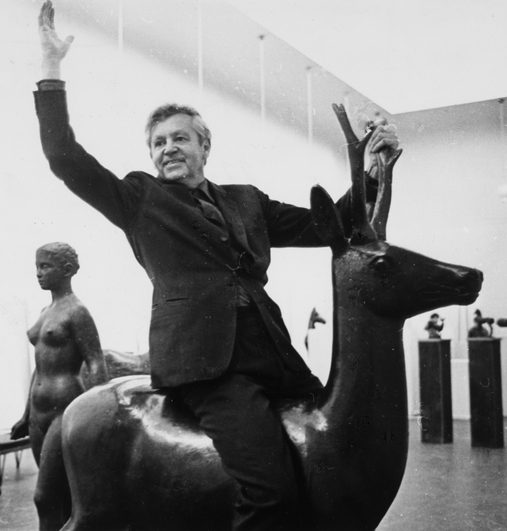|
Kunstnernes Hus
Kunstnernes Hus (Norwegian for "Artists' House") is an art gallery in Oslo, Norway. It is Norway's largest gallery under the direction of artists, and has served as a major center for exhibits of Norwegian and international contemporary art. It is also a prominent example of Functionalist architecture situated in Wergelandsveien 17, across the Royal palace park. After having raised funds and interest for several years, ''Bildende Kunstneres Styre'' (now Norwegian Visual Artists Association) acquired the site for its headquarters in 1927 and opened an architectural contest in 1928. Several important specifications were imposed on entries, among them natural light from the ceiling, limited building height, and a façade that blended with the surrounding architecture. Its architecture is noted as an important milestone in the transition from the legacy of 19th century Neoclassical architecture to 20th century Functionalism. Over 60 proposals were submitted, and the winning proposa ... [...More Info...] [...Related Items...] OR: [Wikipedia] [Google] [Baidu] |
Gudolf Blakstad
Gudolf Blakstad (19 May 1893 – 22 November 1985) was a Norwegian architect. He was noted for his work in the transition between neo-classicism and functionalism in Norwegian architecture. Biography Blakstad was born in Gjerpen, Norway. He was the son of Wilhelm Eriksen Blakstad (1863-1963) and Gunvor Kjos (1855-1932). Blakstad was educated at the Norwegian Institute of Technology where he graduated in 1916. In 1921 he married Ragnfrid Matheson Brun, in Kristiana, Norway. From 1922 he started his own practice in Oslo together with Arnstein Arneberg and Herman Munthe-Kaas. He would maintain a partnership with Herman Munthe-Kaas in the architectural firm Blakstad og Munthe-Kaas Arkitekter for more than 50 years. During the period 1922–1960, they participated in 66 contests, won prizes in 33 of them, of which all 22 were first prizes. The firm ceased in 1989. The firm collaborated on several significant assignments in Norway including Kunstnernes Hus for which they wer ... [...More Info...] [...Related Items...] OR: [Wikipedia] [Google] [Baidu] |
Ørnulf Bast
Ørnulf Bast (25 January 1907 – 28 October 1974) was a Norwegian sculptor and painter particularly known for his public monuments. Background Ørnulf Bjarne Bast was born in Oslo. His parents were Halsten Andersen Bast Birklund (1870–1952) and Ida Mathilde Kristensen (1870–1960). Bast studied at the Norwegian National Academy of Fine Arts (''Statens kunstakademi'') from 1927-30. He made several study trips, first to France from 1928 to 1929 and later to Britain, Germany, Greece, Italy, Spain and North Africa, including Egypt, 1930 and 1932, and a new journey to Paris 1937. He was married in 1940 to Lajla von Hanno (1921–2010). During the occupation of Norway by Nazi Germany, Bast and his wife supplied a cover-up apartment for the Norwegian resistance movement, specifically for the staff of the sabotage squad Aks 13000, for some time. From 1947 until his death in 1974, Bast had a permanent residence in the summer at Fuglevik ved Rakke in Brunlanes, south of Larvik ... [...More Info...] [...Related Items...] OR: [Wikipedia] [Google] [Baidu] |
1930 Establishments In Norway
Year 193 ( CXCIII) was a common year starting on Monday (link will display the full calendar) of the Julian calendar. At the time, it was known as the Year of the Consulship of Sosius and Ericius (or, less frequently, year 946 '' Ab urbe condita''). The denomination 193 for this year has been used since the early medieval period, when the Anno Domini calendar era became the prevalent method in Europe for naming years. Events By place Roman Empire * January 1 – Year of the Five Emperors: The Roman Senate chooses Publius Helvius Pertinax, against his will, to succeed the late Commodus as Emperor. Pertinax is forced to reorganize the handling of finances, which were wrecked under Commodus, to reestablish discipline in the Roman army, and to suspend the food programs established by Trajan, provoking the ire of the Praetorian Guard. * March 28 – Pertinax is assassinated by members of the Praetorian Guard, who storm the imperial palace. The Empire is auctioned o ... [...More Info...] [...Related Items...] OR: [Wikipedia] [Google] [Baidu] |
Modernist Architecture In Norway
Modernism is both a philosophy, philosophical and arts movement that arose from broad transformations in Western world, Western society during the late 19th and early 20th centuries. The movement reflected a desire for the creation of new forms of art, philosophy, and social organization which reflected the newly emerging industrial society, industrial world, including features such as urbanization, architecture, new technologies, and war. Artists attempted to depart from traditional forms of art, which they considered outdated or obsolete. The poet Ezra Pound's 1934 injunction to "Make it New" was the touchstone of the movement's approach. Modernist innovations included abstract art, the stream-of-consciousness novel, montage (filmmaking), montage cinema, atonal and twelve-tone music, divisionist painting and modern architecture. Modernism explicitly rejected the ideology of Realism (arts), realism and made use of the works of the past by the employment of reprise, incorpor ... [...More Info...] [...Related Items...] OR: [Wikipedia] [Google] [Baidu] |



